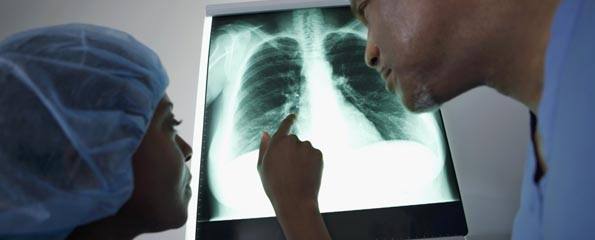Higher risk of artery plaque formation in older COPD patients
Older patients with chronic obstructive pulmonary disease (COPD) are at increased risk for carotid artery plaque formation and for the presence of vulnerable plaques with a lipid core, according to a new study from researchers in the Netherlands.
“We know that COPD is a risk factor for ischemic stroke, and that certain components of carotid artery plaques such as intraplaque hemorrhage and lipid core increase the risk of ischemic events, but plaque composition in patients with COPD has not been examined,” said researcher Bruno H.C. Stricker, MD, PhD, professor of pharmaco-epidemiology at the Erasmus Medical Center in Rotterdam, the Netherlands. “In our study, carotid artery wall thickening was increased twofold in older COPD patients compared with controls with normal lung function, and COPD was an independent predictor of the presence of plaques with a lipid core, which are more prone to rupture.”
The findings were published online ahead of print publication in the American Thoracic Society’s American Journal of Respiratory and Critical Care Medicine.
The cross-sectional study, part of the Rotterdam Study, an ongoing population-based cohort study examining the occurrence of and risk factors for chronic diseases in subjects aged 55 years and older, involved 253 COPD patients and 920 controls. COPD was confirmed by spirometry. Subjects with carotid wall thickening (intima-media thickness ≥ 2.5 mm) on ultrasonography underwent high-resolution magnetic resonance imaging (MRI) to characterise carotid plaques.
Subjects with COPD had a twofold increased risk (odds ratio 2.0, 95%CI 1.44-2.85, p<0.0001) of carotid wall thickening on ultrasonography compared to controls, and this risk increased significantly with the severity of airflow limitation. On MRI, vulnerable lipid core plaques were significantly more frequent in subjects with COPD compared with controls (odds ratio 2.1, 95%CI 1.25-3.69, p=0.0058).
“Clinicians should be aware that COPD patients are at increased risk for asymptomatic carotid atherosclerosis and that COPD might lead to vulnerable plaques by inducing or aggravating the presence of plaques with a lipid core,” said Dr. Stricker.
The study had a few limitations, including the study’s cross-sectional design, which doesn’t allow causal associations between COPD and carotid plaques to be inferred, and the lack of computed tomography confirmation of emphysema
“The results of our study provide new insights into the relationship between COPD and the increased risk for stroke seen in these patients,” concluded Dr. Stricker. “Understanding the underlying risk factors for stroke in COPD patients can help identify those at high risk and lead to the development of more personalised preventive treatment strategies targeting this devastating complication.”
(Source: American Thoracic Society: American Journal of Respiratory and Critical Care Medicine)
Dates
Tags
Created by:

 Login
Login














